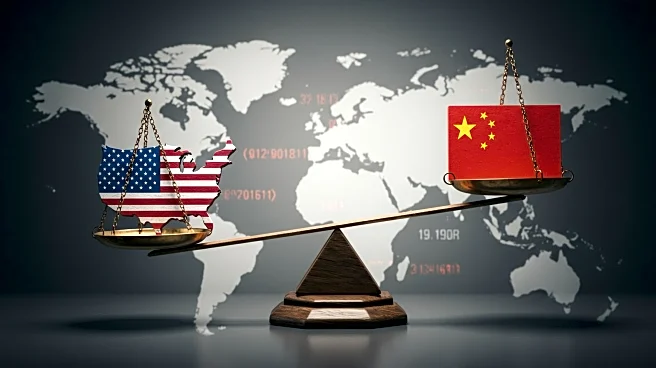Rapid Read • 8 min read
President Trump has extended the tariff truce between the U.S. and China for an additional three months, potentially paving the way for a summit with Chinese leader Xi Jinping later this year. The extension was announced just hours before the deadline, with both countries agreeing to maintain their current tariff rates—30% for U.S. tariffs on Chinese goods and 10% for Chinese tariffs on American goods. This move aims to prevent a significant escalation in trade tensions between the two largest economies. The extension allows both nations more time to address various issues, including American concerns over Chinese overproduction and purchases of Russian oil, as well as Chinese complaints about U.S. export restrictions on semiconductors.
AD
The extension of the tariff truce is crucial for stabilizing trade relations between the U.S. and China, which have been strained by reciprocal tariff hikes and export controls. This development is significant for American consumers, importers, and manufacturers, as it provides a temporary reprieve from potential economic disruptions. The truce also reflects ongoing efforts to reshape global trade dynamics, with President Trump seeking to bring manufacturing back to the U.S. and reduce reliance on Chinese supply chains. For China, maintaining access to American technologies and ensuring a stable economic environment are key priorities. The outcome of these negotiations could have lasting impacts on international trade policies and economic growth.
The next steps involve further meetings between trade and economic officials from both countries, aiming to lay the groundwork for a face-to-face meeting between President Trump and President Xi. These discussions are expected to address technical details and work towards a more concrete trade agreement before the truce expires on November 10. The potential summit later this fall could be pivotal in finalizing a deal that addresses both nations' concerns and stabilizes their trade relationship. The negotiations will likely focus on reducing the U.S. trade deficit with China, diversifying supply chains, and ensuring stable access to rare earth minerals.
The ongoing trade negotiations between the U.S. and China highlight broader geopolitical and economic shifts. The discussions are not only about tariffs but also involve strategic considerations such as technology access and supply chain security. The outcome could influence global trade patterns and impact industries reliant on Chinese manufacturing and rare earth minerals. Additionally, the negotiations underscore the complexities of balancing national security interests with economic growth, as both countries navigate their interdependent yet competitive relationship.
AD
More Stories You Might Enjoy










